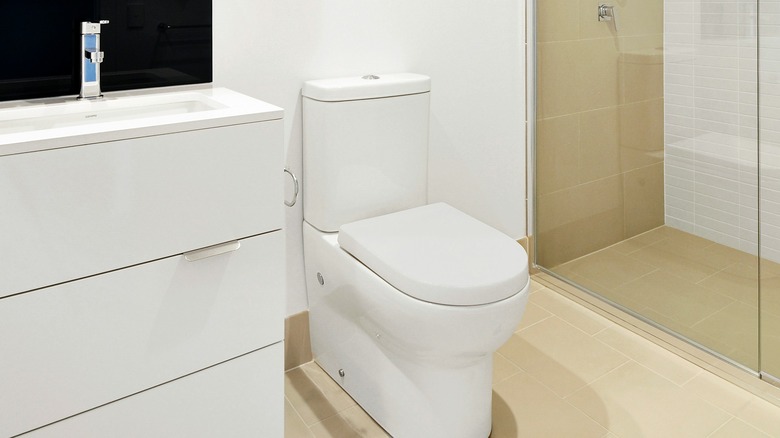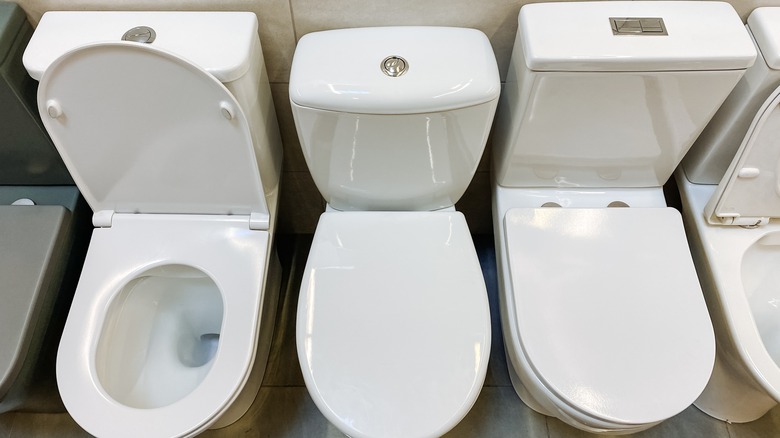The Downsides To Skirted Toilets That No One Talks About
Nature has a way of giving us mixed blessings, and the skirted toilet is a perfect example of this. With its sleek, modern design, the skirted toilet promises a chic, minimalist look while hiding the unsightly plumbing. However, beneath this stylish exterior lie some less glamorous realities that don't always make it to the marketing brochures, like difficulties with installation, sticker shock, and bulkiness.
First, installing skirted toilets can be a hassle since they require specialized fittings and a more complex setup. The smooth enclosed design that covers the trapway and bolts creates accessibility issues. Repairing skirted toilets can also be challenging. Their concealed design makes it hard to identify and access internal components such as the fill valve or flush mechanism. If any part needs replacing or readjustment, it involves disassembling toilet sections or removing the entire unit from the floor.
Now, let's talk price. Skirted toilets look luxurious, and their price tags certainly reflect that. These models are generally more expensive than standard models due to their streamlined design and the additional manufacturing processes. Also, replacement parts for skirted toilets can sometimes be more specialized and harder to source, leading to potential delays and higher prices for maintenance. Lastly, skirted toilets have a bulkier design, which can be a significant concern for people with small bathrooms. Their exterior hides the trapway, making them larger in depth and width compared to standard toilets. This added bulk can reduce floor space, making the bathroom feel cramped.
Other considerations besides the skirt in choosing a toilet
Knowing what to consider when purchasing the right toilet for your bathroom can help you find a balance between style, functionality, and ease of maintenance. In addition to considering the ease of installation, cost, and size, homeowners should also factor in the toilet's features, water efficiency, and height.
Some toilet models come with advanced features like bidet functions, heated seats, or self-cleaning capabilities. These options not only enhance comfort and convenience but also influence the overall cost. When selecting a toilet, it is best to go for models with a WaterSense label, which indicates they use less water per flush while maintaining performance. This can lead to significant savings on your water bill over time.
The last consideration is the toilet height. Standard toilets are typically 15 inches high, while comfort-height models reach 17 to 19 inches. Comfort-height toilets can be easier for some users to sit on and stand up from, making them a great option for families or those with mobility issues.

